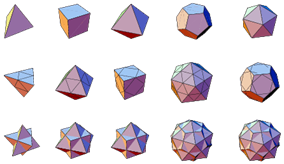INTRODUCTION TO SOLIDS
Solid is one out of the three classical states of matter (the others being gas and liquid). It is characterized by structural resistance and inflexibility to changes of shape or volume. Different from a liquid, a solid object does not flow to take on the shape of its container, nor does it expand to fill the complete volume available to it such as a gas does. The atoms in a solid are tightly bound to each other either in a regular geometric lattice (crystalline solids that include metals and ordinary water ice) or unevenly (an amorphous solid such as common window glass).

The field of chemistry that deals with solids is called solid-state physics and is the chief branch of condensed matter physics (that also includes liquids). Materials science is primarily concerned with the chemical and physical properties of solids. Solid-state chemistry is particularly concerned with the synthesis of novel materials, in addition to the science of identification and chemical composition.